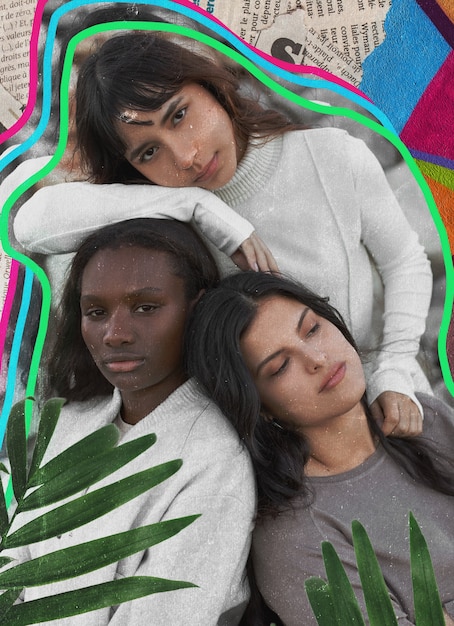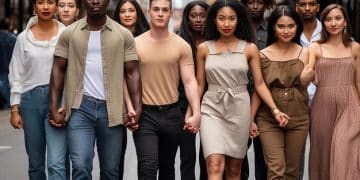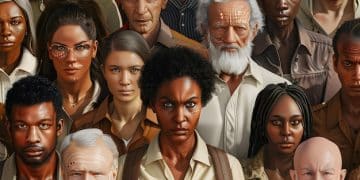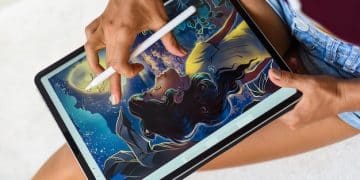Media Stereotypes: Promoting Accurate Portrayals in Media

Exploring the Role of Media Representation in Perpetuating Stereotypes: How Can Media Outlets Promote More Accurate Portrayals? Media outlets play a crucial role in shaping public perception; thus, promoting accurate and diverse portrayals can combat stereotypes and foster a more inclusive society through conscious representation.
The media wields immense power in shaping societal perceptions, yet this power is often misused, leading to the perpetuation of harmful stereotypes. Exploring the Role of Media Representation in Perpetuating Stereotypes: How Can Media Outlets Promote More Accurate Portrayals? requires a critical examination of current practices and a commitment to fostering more responsible and inclusive storytelling.
The Power of Media in Shaping Perceptions
The influence of mass media on individual and societal beliefs is undeniable. Media, encompassing television, film, print, and digital platforms, acts as a primary source of information, entertainment, and cultural narratives. Given this prominent role, the manner in which the media portrays different groups of people can have far-reaching implications, reinforcing or challenging pre-existing biases.
When media consistently presents stereotypical images, it can solidify these inaccurate portrayals in the minds of viewers, leading to prejudice, discrimination, and a limited understanding of the complexities within various communities. Therefore, it is crucial to delve into the responsibility of media outlets in either perpetuating or combating stereotypes.
Understanding Media’s Influence on Stereotypes
Media representation can shape beliefs, attitudes, and emotional reactions by influencing how people perceive themselves and others. This influence may be conscious or unconscious. Inaccurate or incomplete portrayals can lead to misinterpretations and unfair judgment, affecting areas ranging from employment opportunities to social interactions.
For example, if a particular ethnic group is repeatedly depicted as criminals in a crime drama, those stereotypes can bleed into how individuals perceive that group in everyday life. Recognizing the persuasive potential of media is the first step towards responsible storytelling.
- Framing: This refers to how media organizes and presents information, influencing how audiences interpret events.
- Priming: This occurs when exposure to certain media content activates related thoughts and feelings, influencing subsequent judgments and behaviors.
- Cultivation Theory: This suggests that long-term exposure to media content can shape an individual’s perceptions of reality, leading to an alignment of beliefs.
Ultimately, media’s power to shape perceptions requires careful consideration of the messages being transmitted. A more diverse and nuanced portrayal of individuals and groups can counteract harmful stereotypes and promote inclusivity.

How Media Perpetuates Harmful Stereotypes
Despite advancements in social awareness, media outlets continue to perpetuate damaging stereotypes, often inadvertently or due to ingrained cultural biases. These stereotypes can manifest across various demographics, including gender, race, ethnicity, sexual orientation, and socioeconomic status. Understanding the mechanisms through which stereotypes are reinforced is essential for recognizing and mitigating their impact.
One of the primary ways media perpetuates stereotypes is through oversimplified depictions that reduce individuals to a few defining characteristics. This can lead to a lack of understanding. By examining the common pitfalls in media representation, it becomes possible to identify and challenge these patterns.
Common Stereotypes in Media
Media continues to recycle many tired stereotypes that can be detrimental to specific groups of people. Such stereotypes can range from the portrayal of women as passive or overly emotional, to the depiction of men as aggressive and stoic. It is important to recognize these representations, because they can perpetuate unrealistic and damaging expectations.
Often, these stereotypes are deeply ingrained in popular culture, and are so often repeated they are normalized, which makes them even more difficult to disrupt. Critically examining these representations is essential for fostering change.
- Gender Stereotypes: Women are frequently depicted as caregivers or romantic interests, while men are often shown as breadwinners or action heroes.
- Racial Stereotypes: People of color are sometimes portrayed in narrow, one-dimensional roles that perpetuate harmful generalizations.
- Socioeconomic Stereotypes: Lower-income individuals are often depicted as lacking intelligence or ambition, while wealthy individuals are portrayed as inherently superior.
Harmful stereotypes can be perpetuated in media through lack of diversity in casting, writing, and production. When stories are told predominantly through a single perspective, it is likely that these perspectives will reflect stereotypes and perpetuate harmful biases. By identifying these common pitfalls, media outlets can strive to achieve more authentic and inclusive storytelling.
The Impact of Stereotypes on Society
The perpetuation of stereotypes in media has profound implications for both individuals and society as a whole. These stereotypes not only reinforce biases but also shape perceptions, influence behaviors, and create barriers to equality and inclusion. The repercussions of these inaccurate portrayals can affect various aspects of life, from personal identity to systemic inequalities.
Stereotypes can lead to discrimination in employment, education, and social interactions. Understanding the comprehensive impact of media stereotypes is key to advocating for more accurate and equitable representations.
Effects on Self-Perception and Identity
When individuals are consistently exposed to negative stereotypes in media, it can influence their self-esteem and sense of identity. This is particularly true for young people who are vulnerable to influence and are still forming their self-concept. Internalizing these stereotypes can lead to a sense of inadequacy, disempowerment, and alienation.
If individuals do not see themselves represented accurately or positively in the media, it can lead to feelings of invisibility or marginalization. For example, children from minority backgrounds may struggle to identify with characters on television or in films, affecting their overall sense of belonging.
- Internalization of Negative Stereotypes: Individuals may start to believe the negative portrayals of their own group, leading to diminished self-worth.
- Reduced Opportunities: Stereotypes can limit opportunities as individuals may face prejudice and discrimination in employment, education, and other areas of life.
- Identity Crisis: Inaccurate representation can create confusion and uncertainty about one’s own identity, particularly for individuals who belong to marginalized groups.
Media representations heavily influence how we perceive ourselves and how we interact with the world around us. By recognizing the significant influence of the media, it is possible to foster change in media that is more truly reflective of the diversity of the culture.

Strategies for Promoting Accurate Portrayals
Combating stereotypes and promoting accurate portrayals in media requires a multifaceted approach involving media creators, industry leaders, and audiences. Implementing strategies that promote diversity, inclusivity, and authentic storytelling can lead to more balanced and equitable representations. By adopting these strategies, media outlets can pave the way for social change.
One of the most effective strategies is to increase diversity in casting, hiring writers, and production teams. When individuals from varied backgrounds are given the opportunity to tell their own stories, it is more likely that they will reflect complex experiences and reduce reliance on stereotypes.
The Role of Media Creators
Media creators, including writers, directors, producers, and actors, play a pivotal role in shaping on-screen narratives. By consciously challenging stereotypes and ensuring authentic portrayals, they can influence audiences and promote social change. This involves a commitment to inclusive storytelling and a willingness to amplify the voices of underrepresented groups.
It is important for media creators to engage with communities they are portraying by listening to unheard perspectives, which can help to create greater authenticity in their productions. Education and training on diversity and inclusion can also enable creators to challenge the implicit biases and to become more mindful of their impact.
- Inclusive Storytelling: Prioritizing stories that highlight the complexities and nuances of different communities, challenging stereotypes and promoting empathy.
- Diversity Training: Providing education on unconscious bias and cultural sensitivity for writers, directors, and producers.
- Community Engagement: Building relationships with community leaders and advocacy groups to ensure authentic and respectful portrayals.
By making a conscious effort to promote diversity and combat stereotypes, media creators can make a significant difference in supporting more positive representation that reflects the diversity of the culture.
The Importance of Diverse Representation
Diverse representation in media goes beyond simply including individuals from different backgrounds. It involves portraying them authentically and respectfully, with attention to their unique experiences, perspectives, and identities. When media accurately reflects the diversity of the world, it creates a sense of visibility and validation for underrepresented groups.
It is important to understand that diversity is not just about ticking boxes. It requires a genuine commitment to inclusivity and a recognition of the importance of lived experiences. By truly representing the diversity of society, media outlets can foster a more connected and understanding world.
Representation and Inclusivity
The inclusion of diverse characters and stories can contribute to a more inclusive society, where individuals from all backgrounds feel seen and valued. When media reflects a variety of identities, it helps challenge existing biases, promotes empathy, and reinforces a sense of belonging.
The benefits of inclusivity also extend economically as well. Diverse media productions can attract a wider audience and increase viewership. This happens because people want to see stories that authentically reflect their experiences and identities. Inclusivity is not only a social imperative but also a smart business strategy.
- Accurate Portrayals: Ensuring that characters and stories are based on authentic experiences and do not perpetuate harmful stereotypes.
- Empowerment: Creating opportunities for diverse talent both in front of and behind the camera, allowing them to shape the narratives being told.
- Promoting Understanding: Highlighting the richness and complexity of different cultures, fostering empathy and reducing prejudice.
By fostering inclusivity and supporting diverse representation, the media can promote connections between people from diverse backgrounds, creating a shared feeling of belonging.
Holding Media Accountable
Achieving accurate and responsible media representations requires accountability, both from within the industry and from external stakeholders. Holding media outlets accountable for perpetuating stereotypes and misrepresentations involves implementing mechanisms for feedback, criticism, and continuous improvement. Consumer vigilance, industry self-regulation, and advocacy efforts are essential for maintaining the media’s social responsibility.
One effective method is to establish feedback mechanisms for audience members. This approach allows viewers to voice concerns and provide feedback on misrepresentations or stereotypical portrayals. When media outlets are responsive to criticism and adapt their content accordingly, it promotes increased accountability.
- Audience Feedback Mechanisms: Establish methods for viewers to provide feedback on media content, such as online forums, social media platforms, and email campaigns.
- Industry Self-Regulation: Encourage media organizations to adopt codes of ethics and guidelines for responsible reporting and representation.
- Advocacy and Activism: Support advocacy groups and activist organizations that challenge media stereotypes and promote greater diversity and inclusivity in storytelling.
By holding media outlets accountable, communities and individuals can promote positive change and advance media representations that reflect the complexities and diversity of the modern world.
| Key Point | Brief Description |
|---|---|
| 💡 Media’s Influence | Media shapes perceptions, reinforcing or challenging biases. |
| 🎭 Common Stereotypes | Gender, racial, and socioeconomic stereotypes persist in media. |
| 🌟 Diverse Representation | Authentic portrayal of diverse experiences is essential. |
| 📣 Accountability | Feedback and industry regulation promote responsible media. |
Frequently Asked Questions
▼
Media representation shapes public perception and understanding. Accurate representation can combat stereotypes, promote empathy, and foster inclusion, while misrepresentation can perpetuate harmful biases and discrimination.
▼
Common stereotypes include gender stereotypes (e.g., women as overly emotional), racial stereotypes (e.g., people of color as criminals), and socioeconomic stereotypes (e.g., lower-income individuals as lacking intelligence).
▼
Stereotypes can negatively affect self-esteem and identity, particularly for individuals belonging to marginalized groups. They may lead to internalization of negative beliefs, reduced opportunities, and identity crises.
▼
Strategies include increasing diversity in media creation, promoting inclusive storytelling, and fostering community engagement. Diversity training and education on unconscious biases can also help media creators avoid perpetuating stereotypes.
▼
Media outlets can be held accountable through audience feedback mechanisms, industry self-regulation, and advocacy efforts. Encouraging media organizations to adopt codes of ethics promotes responsible reporting and representation.
Conclusion
In conclusion, addressing the role of media in perpetuating stereotypes requires ongoing effort and commitment. By striving for accuracy, diversity, and inclusivity, media outlets can play a transformative role in promoting social justice and fostering a more equitable society for all.





